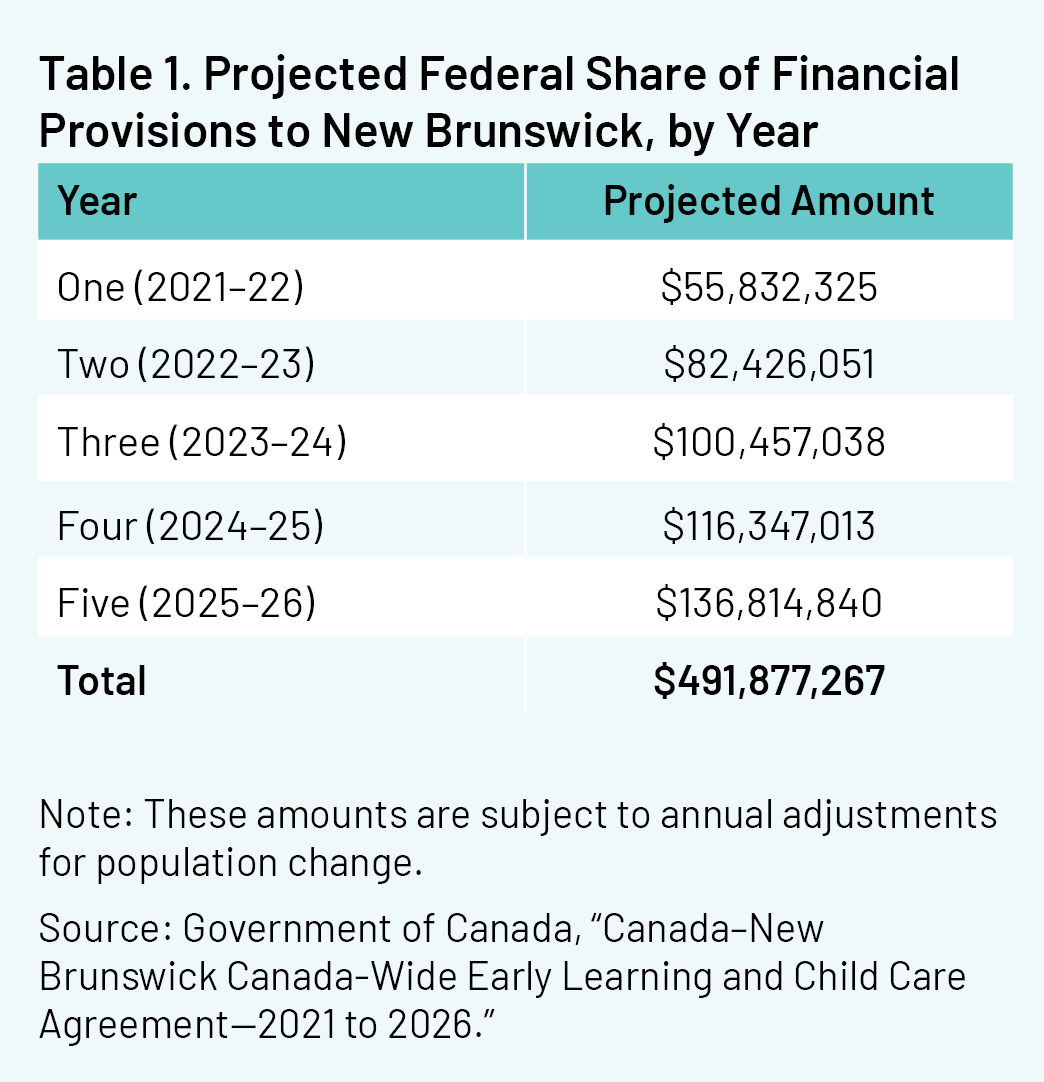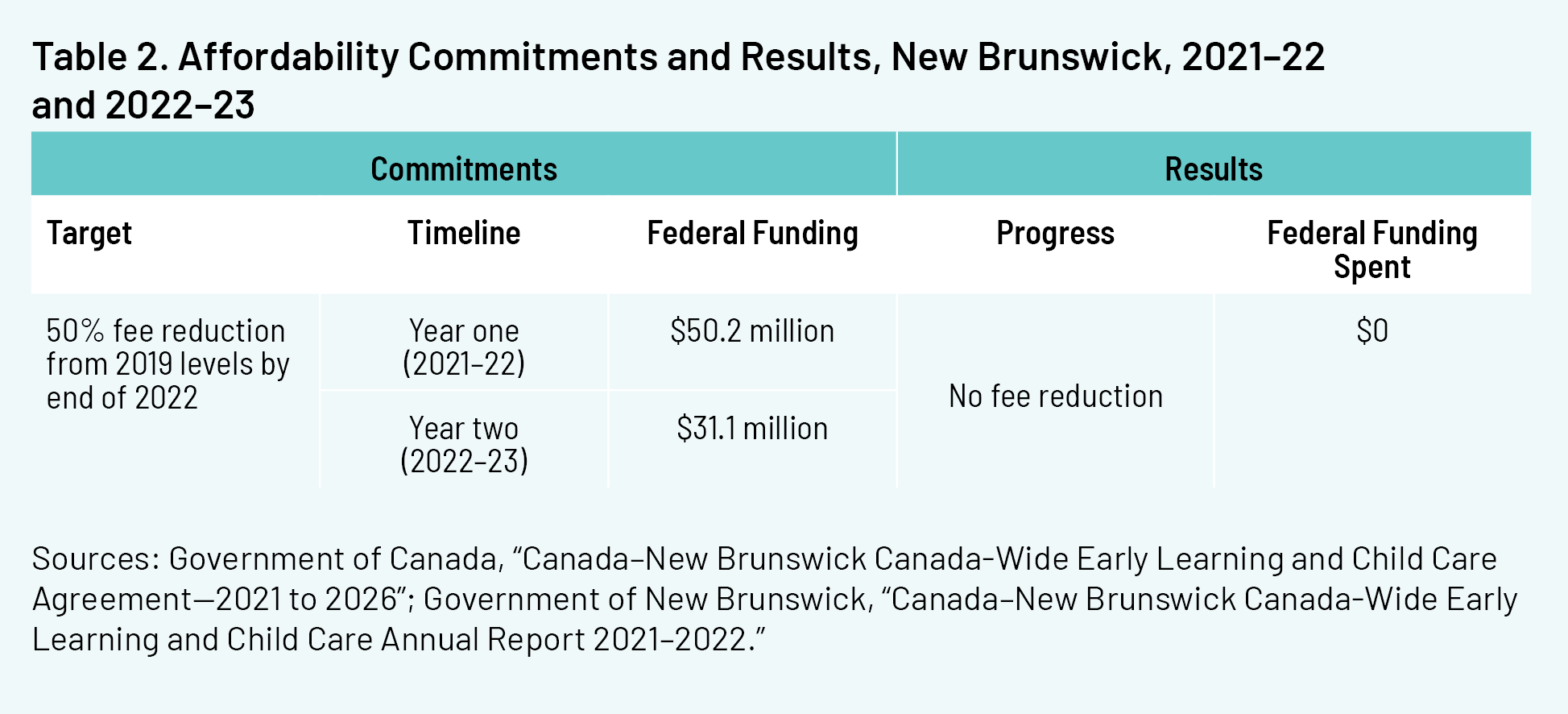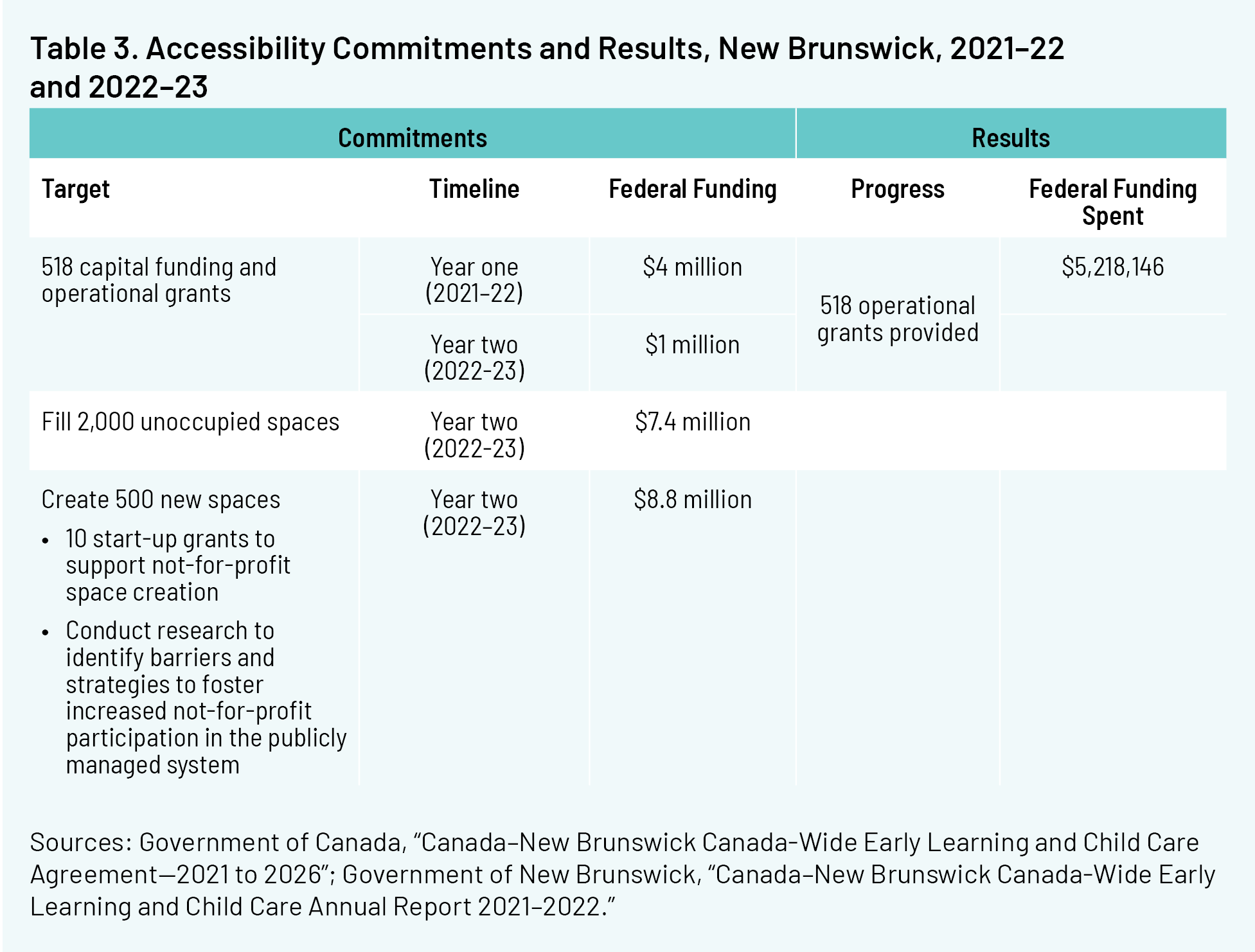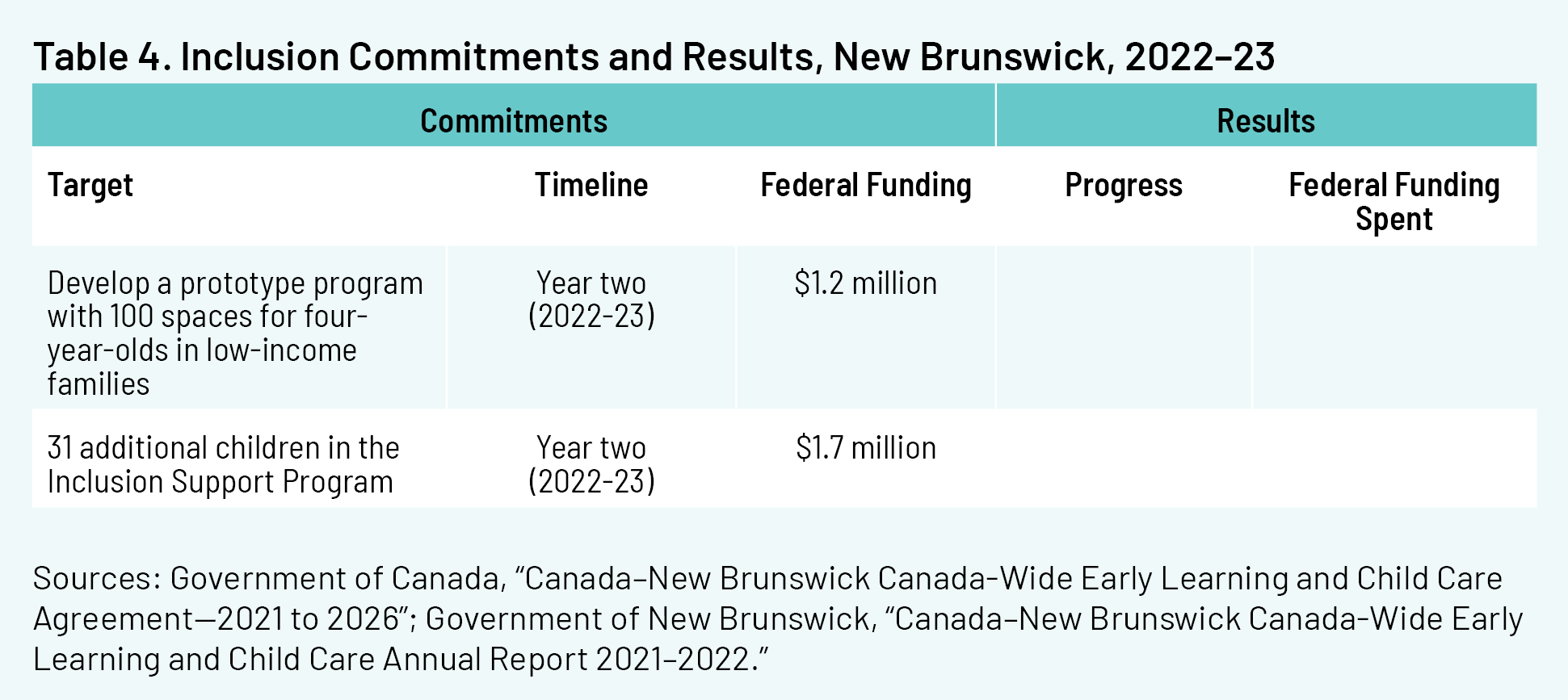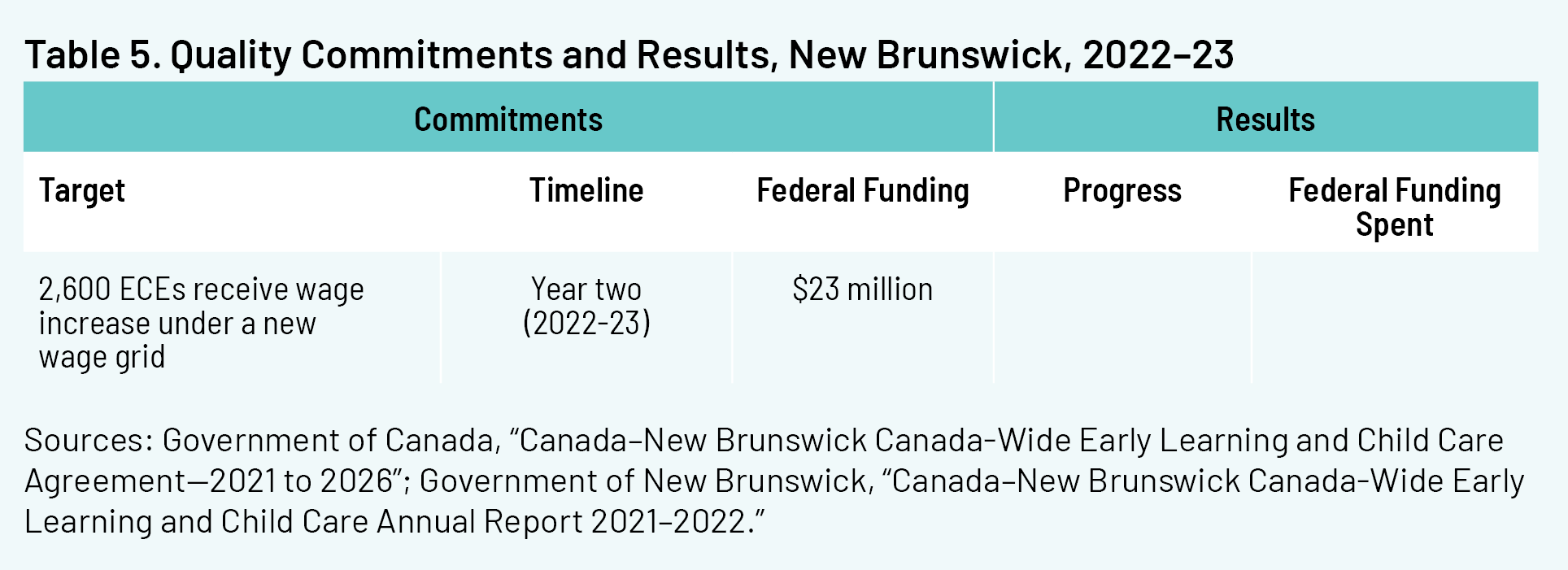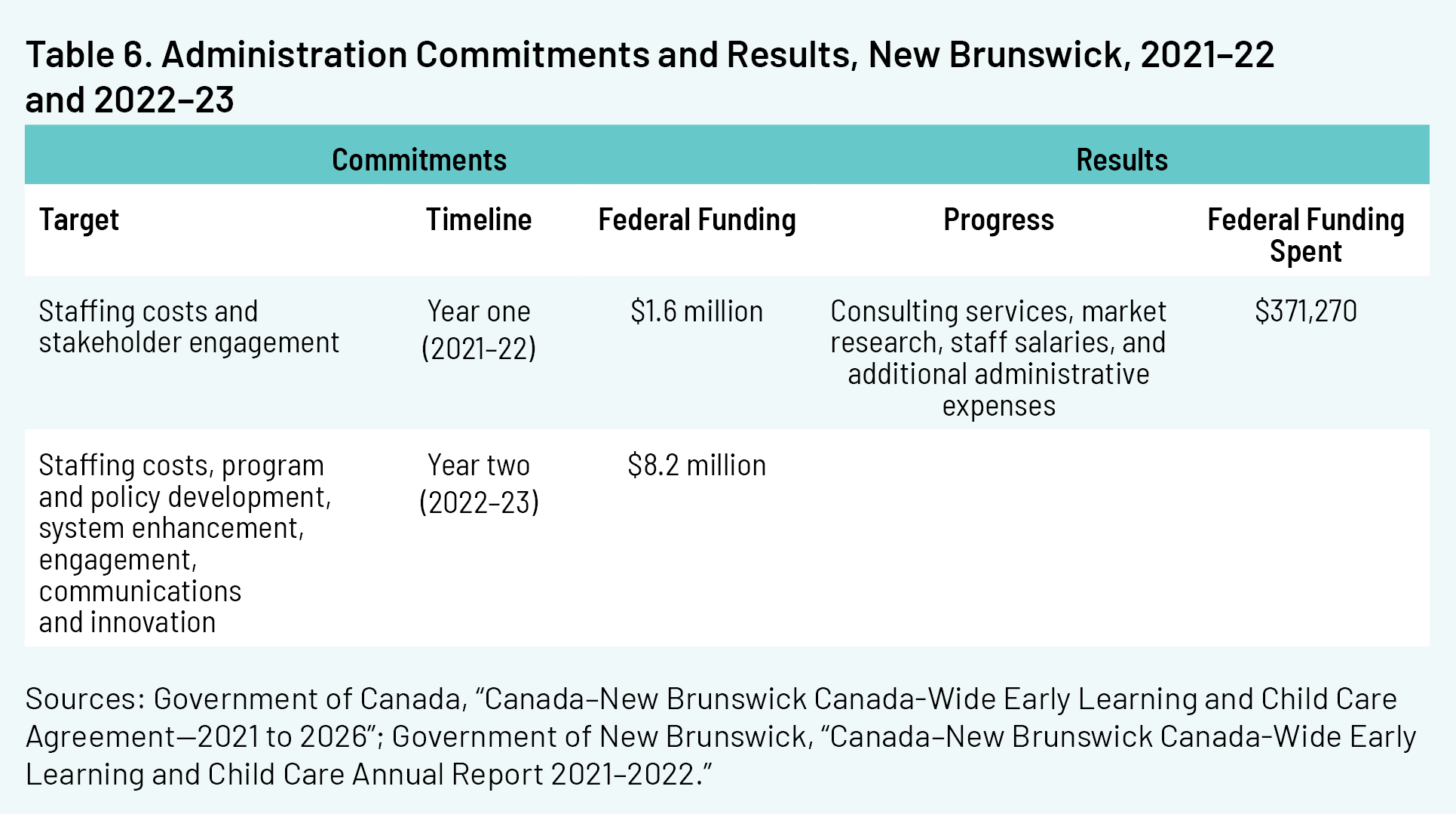Introduction
Canada’s federal budget for 2021 included a $27 billion commitment to establish a $10-a-day childcare program within five years. Combined with additional funding, a total of $30 billion was committed in years one through five, with a projected annual cost of at least $9.2 billion in year five and later. The federal government then entered into negotiations with each province and territory (negotiating a unique asymmetrical agreement with Quebec, which has a program already) to jointly determine the funding and goals. These negotiations resulted in a “Canada-Wide Early Learning and Child Care Agreement” with each province and territory (which we refer to as “the Agreement” in this report).
Cardus conducted its own costing estimate in 2021 prior to the release of the agreements, concluding that the federal government had underestimated the cost and complexity of implementing a national childcare program. 1 1 A. Mrozek, P.J. Mitchell, and B. Dijkema, “Look Before You Leap: The Real Costs and Complexities of National Daycare,” Cardus, 2021, https://www.cardus.ca/research/family/reports/look-before-you-leap. Cardus is now studying the funds spent and goals achieved in each province and territory annually. We will issue provincial and territorial reports for each year of the agreements as data become available.
The Agreement with New Brunswick was signed on December 12, 2021. 2 2 Government of Canada, “Canada–New Brunswick Canada-Wide Early Learning and Child Care Agreement—2021 to 2026,” December 12, 2021, https://www.canada.ca/en/early-learning-child-care-agreement/agreements-provinces-territories/new-brunswick-canada-wide-2021.html.
This brief presents the results for year one for New Brunswick (fiscal year 2021–22, which is April 1, 2021 to March 31, 2022).
Year-One Summary
The New Brunswick childcare system operates with designated and non-designated licensed spaces. Designated spaces account for 95 percent of all licensed spaces as of March 31, 2022. Designated providers commit to additional requirements and offer lower-fee care, receiving additional funding in return. Non-designated licensed providers have more flexibility regarding fees, among other factors, but receive less provincial funding. Only designated providers are eligible to receive funding under the Agreement.
The province should be commended for issuing publicly an annual progress report for year one, as the majority of provinces and territories failed to do so. 3 3 Government of New Brunswick, “Canada–New Brunswick Canada-Wide Early Learning and Child Care Annual Report 2021–22,” 2023, https://www2.gnb.ca/content/dam/gnb/Departments/eco-bce/Promo/early_childhood/elcc-agreement-annual-report.pdf.
New Brunswick was among the last provinces and territories to finalize an agreement with the federal government, signing about four months before the end of year one. As a result, the year-one targets were modest, with a funding allocation of about $55 million. Even with modest targets, the province spent less than $6 million of the year-one allocation.
Although more than $50 million was allocated for fee reductions in year one, the province spent no funding on this objective. Funding from the administrative allocation was used to hire consultants and marketing strategists to prepare for fee reductions for year two.
The province allocated $4 million for 518 operational grants but spent $5.2 million on the grants. Funding was disbursed per space, to designated providers, with infant spaces funded at $600 and preschool spaces at $430.
Salaries accounted for the majority of the $371,270 spent on administrative costs, well below the $1.6 million budgeted for year-one administration.
The province’s relationship with for-profit providers will be important in the coming years, particularly concerning space-creation targets. For-profit providers accounted for 68 percent of spaces at the time of the Agreement, but the Agreement limits them to about 30 percent of new-space allocation. The Agreement also commits the province to exploring the voluntary transition of for-profit daycares into not-for-profit ones.
There was a net increase of about three hundred spaces during fiscal year 2021–22, divided nearly evenly between for-profit and not-for-profit providers, despite greater representation of for-profit providers in the province. Concerningly, infant spaces in for-profits showed a net loss of thirty spaces.
New Brunswick relies significantly on licensed for-profit providers, yet it yielded to the federal government’s preference for not-for-profit providers. This may have significant ramifications for the childcare sector including reducing the ability to meet space-creation targets by limiting growth in the for-profit sector.
Agreement at a Glance
Term: April 1, 2021 to March 31, 2026.
Federal Funding Estimate
Table 1 displays the projected federal share of financial provisions for each year of the Agreement.
Major Targets
- Reduce fee to 50 percent of the 2019 average fee by the end of year one, and to an average of $10 a day by year five.
- Increase the number of regulated childcare spaces from 47 percent to 59 percent coverage for children under age six by year five.
- Create 3,400 full-time-equivalent spaces by the end of year five of the Agreement.
Pre-Agreement Baseline Measures
- Provincial childcare budget of $115 million in 2019–20. 4 4 Government of New Brunswick, “Education and Early Childhood Development Annual Report 2019–2020,” 2020, 31, https://www2.gnb.ca/content/dam/gnb/Departments/ed/pdf/Publications/annual-report-2019-2020.pdf.
- Average parental fees of $33.25 a day for full-time-equivalent care in 2019. 5 5 Government of Canada, “Canada–New Brunswick Canada-Wide Early Learning and Child Care Agreement,” annex 2.
- 15,023 full-time and part-time designated spaces, and 1,204 full-time and part-time non-designated licensed spaces, as of September 2021. 6 6 Government of Canada, “Canada–New Brunswick Canada-Wide Early Learning and Child Care Agreement,” annex 2, tables 2 and 3.
Agreement Targets and Progress
The Canada-wide agreements share a similar structure, focusing on four priorities: affordability for parents, increasing access through space creation, making childcare more inclusive, and improving the quality of care.
New Brunswick provided an action plan for the first two years of the Agreement (2021–22 and 2022–23). The tables that we show here summarize the commitments made, the year in which targets are to be achieved, and the federal funding allocated to the targets.
The tables also summarize the progress made towards the target and the funding spent on these efforts in year one. Results and spending were publicly reported, per section 5.2.2.e of the Agreement, and the results that we show are taken from the “Canada–New Brunswick Canada-wide Early Learning and Child Care Annual Report 2021–2022,” unless otherwise noted.
Affordability
The province did not reduce parent fees in year one despite allocating $50.2 million for this purpose (table 2). The province reports that it contracted with a consulting firm to explore fee-reduction options and with a marketing firm to develop a plan to promote fee reductions in year two. The administration budget reflects consulting and marketing costs that likely relate to these activities.
Accessibility
The province exceeded the $4 million allocated for 518 operational grants in year one, spending $5,218,146 (table 3). The grants were intended to prepare providers for the implementation of the Canada-wide program and to improve service quality. Eligible providers could receive $600 per infant space and $430 per preschool space.
Despite the implementation of the grants, the province appears to have experienced a net loss of for-profit infant spaces during year one, although there was a net gain of about three hundred total spaces when including spaces for toddlers.
Inclusion
No funding was allocated under the Agreement for inclusion initiatives in year one (table 4).The province did receive funding for inclusion under a separate bilateral agreement (not reported here). The province reports that preparations were made in anticipation of year-two inclusion targets.
Quality
No funding was allocated toward quality targets in year one (table 5). The province allocated federal funding for the implementation of a wage grid and enhancement of the wage-support program in year two. Additional efforts were funded under a separate $9.2 million under a previous bilateral agreement with the federal government, which is not reviewed here.
Administration
The province was significantly under budget on administrative costs, spending just $371,270 of the $1.6 million allocated (table 6). A majority of the spending covered salaries ($320,646). The province spent $26,779 on market research, $22,799 on consulting services, and about $1,000 on miscellaneous administrative costs.
Legislative and Policy Changes
Prior to signing the agreement in December 2021, the province amended the Early Childhood Services Act to authorize the provincial government to collect data on licensed operators and children enrolled at licensed facilities, through an online registry. This amendment will enhance program evaluation.
The provinces also amended the Childcare Subsidies Regulation 2018–12 under the Early Childhood Services Act to exclude the Canada–New Brunswick Housing Benefit from the total household income used to determine qualifications for subsidies.
Additional Observations
As previously noted, the province signed the Agreement with less than four months remaining in the fiscal year and spent about $5.5 million of the approximately $55 million allocated for year one.
What impact will the Agreement have on the long-term viability of for-profit providers? The province reported that 68 percent of spaces are provided by for-profit operators, but the Agreement gives preference to not-for-profit and public care. For example, the Agreement limits space creation in for-profit care to just 1,000 spaces out of the 3,400 planned new spaces. The Agreement also states that the province will explore the voluntary transition of for-profit providers into non-profit entities.
The province reported a net gain of about 300 spaces during year one. The net increase was nearly identical among for-profits and non-profits, despite the fact that more than two-thirds of all spaces are in for-profit care. 7 7 Government of Canada, “Canada–New Brunswick Canada-Wide Early Learning and Child Care Agreement.” Additionally, there was a net lost of thirty infant spaces among for-profits providers, compared with a net gain of five infant spaces among not-for-profits providers.
The federal preference for not-for-profit and public providers could weaken the for-profit sector. The choice to limit space creation in the for-profit sector could negatively affect the province’s ability to meet the obligations under the Agreement. The province may need to reconsider the role of for-profit providers, in order to create the additional spaces needed to operate the program.

